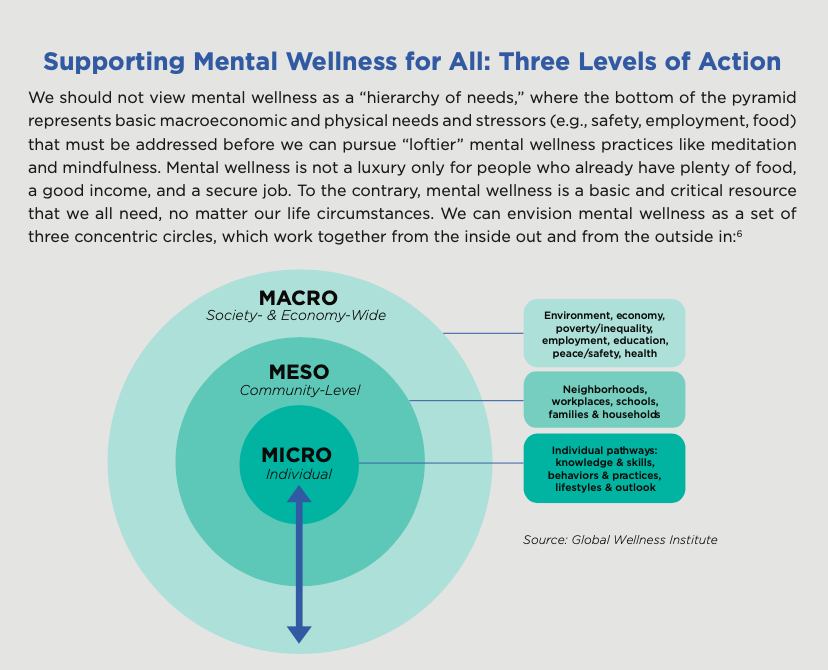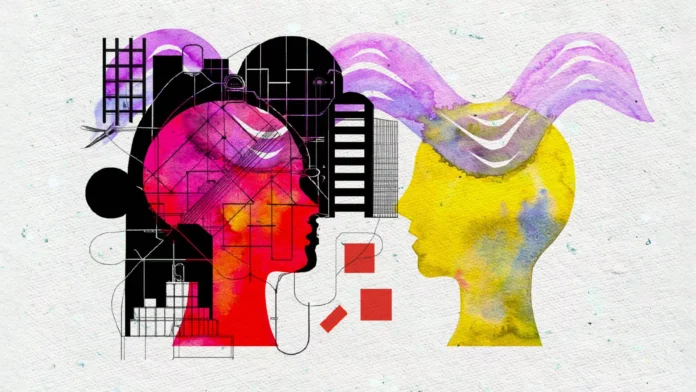Mental health seems to be an individual struggle but when we understand some of the underlying causes of mental health issues, we see that there is a systematic infrastructure in our communities that affects our mental health.
“The notion that mental wellness is about self-care and personal agency does not imply that it is solely an individual pursuit or that it is fully within our own locus of control. The external and macro environment is not only an enabler or obstacle to pursuing mental wellness; it is often the very cause of our mental distress. People who are subject to systematic violence, cruelty, discrimination, abuse, injustice, war, poverty, famine, displacement, natural and manmade disasters, and other dire situations suffer major blows to mental wellness that are outside of their control. These types of trauma can trigger chronic mental distress that may take years, a lifetime, or even generations to overcome, and that may also lead to clinical mental illness” (Johnston, et al., 2021).
If individual mental health can be affected by broader forms of policy and infrastructure, is it not our duty to ensure that our mental health is promoted and supported by the communities we live in?
If we think about mental health at different levels, three different domains can affect an individual’s mental health. The first is the micro-level which is associated with the individual. The second is the meso-level which focuses on our communities. The third is the macro-level which focuses on societal and the wide-economic scale (Johnston, et al., 2021).

“Governments play a major role in our access to mental wellness. At the highest level, external and macro-level circumstances (e.g., poverty, unemployment, war, hunger) are major impediments to mental wellness, and these are shaped by government policies both nationally and locally…Governments can help build up our mental wellness resources and enhance neuroplasticity early in our lifespans by supporting good prenatal and postnatal care or by teaching key skills like meditation and mindfulness in schools. At the city and community level, government policies can support mental wellness-enhancing physical and built environments (e.g., access to parks, green space, facilities for physical recreation, arts and culture, etc.)” (Johnston, et al., 2021).
“Industry and businesses play a vitally important role in the mental wellness landscape. Mental wellness has grown out of a consumer-led, grassroots movement that demands self-directed, holistic, natural and alternative solutions outside of the established fields of medicine, psychiatry and psychology. Private businesses across many industries (hospitality, spas, technology, consumer goods, housewares, books and media, etc.) have become a major vehicle for developing new solutions by adopting and adapting mental wellness modalities and delivering them to consumers through multiple channels” (Johnston, et al., 2021).
Personal finance and well-being fall into all three domains. It is your individual money that you are putting into your community businesses and banks which then go on to be a part of the larger national and global economy. By understanding the connections of these domains and how they all must work together to promote good mental health, we can use design to create relationships between these domains that help us grow individually and collectively.
References:
Johnston, K., Yeung, O. (2021, August 10). Is Mental Wellness an Individual or Collective Responsibility? Global Wellness Institute. https://globalwellnessinstitute.org/global-wellness-institute-blog/2021/08/10/is-mental-wellness-an-individual-or-collective-responsibility/




